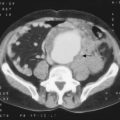CHAPTER 21 Organ and tissue transplantation
Classification
This depends on the relationship between donor and recipient.
Organ and tissue donors
Organs and tissues may be obtained from:
Deceased donors
Obtaining permission for deceased organ donation
Donation after cardiac death (DCD)
This type of organ donation applies to renal transplantation and liver transplantation only but tissues such as heart valves, corneas, bone, etc. can also be removed from this type of donor. The distinction between a DBD and DCD donor lies in the mode of death. DBD donors usually die from an intracranial catastrophe (→ Table 21.1), the mode of death being classified as ‘brainstem death’. In DCD donors, the patient dies from a cardiorespiratory arrest, their death being classified as a ‘cardiac death’. After death, kidneys are viable for around 30 min (maximum of 45 min in young donors).
Brainstem death
This is covered in Chapter 18, as this is the province of doctors independent of the transplant team.
Living donors
Categories of living donation established under the Act are:
Independent assessors
Work-up for a living donor
For a genetically related donor, there are three potential histocompatibility matches:
Tissue matching
Histocompatibility matching
Some examples of HLA matching are given below:
In example (a) the recipient is a 1-2-1 mismatch. In example (b) the recipient is a 1-2-0 mismatch.
Organ preservation
Cold ischaemic time
This is the time from perfusion with ice-cold preservative until circulation is re-established in the recipient. Table 21.2 shows appropriate times for warm and cold ischaemic time for different organs.
| Organ | Warm | Cold |
|---|---|---|
| Kidney | 30 min | Up to 48 h |
| Heart | 0 | Up to 4 h |
| Heart/lung | 0 | Up to 4 h |
| Lung | 0 | Up to 4 h |
| Liver | 0 | Up to 18 h |
| Small bowel | 0 | As soon as possible |
| Pancreas | 0 | Up to 12 h |
Rejection
Immunosuppression
Specific organs
Liver transplant
Donor
Diagnosis of rejection
Reduced bile output of poor quality down the T tube. Deteriorating LFTs. Biopsy.
Complications
Results
Heart and heart/lung transplant
Pancreatic transplantation
General complications
These include infection and malignancy.

 Infection post-transplant may be dangerous and life-threatening and is related to use of immunosuppression. Infections may be bacterial, viral, fungal or protozoal. These include:
Infection post-transplant may be dangerous and life-threatening and is related to use of immunosuppression. Infections may be bacterial, viral, fungal or protozoal. These include:


